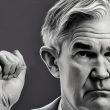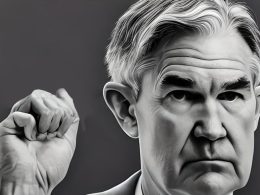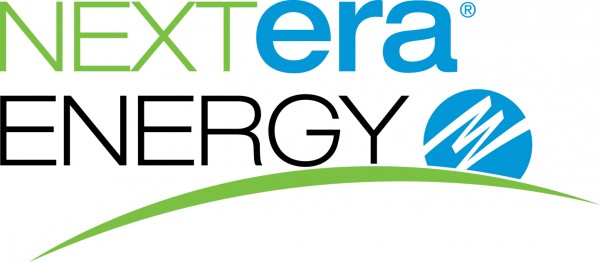by Liz Ann Sonders, Chief Investment Strategist, & Kevin Gordon, Charles Schwab & Company Ltd.
With unanimity, the Fed opted to keep the fed funds rate unchanged but remains attentive to the idea that inflation risk should still be paid attention to.
Another tweak made to the statement this month was the upgrading of the Fed's characterization of economic conditions from "solid" to "strong." The statement had a repeat of the "extent of additional policy firming that may be appropriate to return inflation to 2% over time," with the Fed taking into account the cumulative tightening of monetary policy to date, as well as the variable lags in terms of the effects on inflation, the labor market and overall economic growth. Specific to the labor market, the statement's reference to job gains was adjusted from "slowed in recent months" to "moderated since earlier in the year."
Another focus of today was the quarterly refunding announcement from the Treasury department, which highlighted a tweak in issuance toward shorter-duration securities in response to recent yield moves. That led to a slight retreat in the 10-year yield to less than 4.8% (down from more than 4.9% prior to the announcement and down from the October 19 high of 5%).
Presser highlights
- We're not sure precisely why, but for apparently for the first time ever, Powell is using a teleprompter for the press conference (vs. referring to his iPad at prior pressers).
- Powell started with the Fed's determination to "get inflation under control," while also emphasizing the "brisk" pace of balance sheet reduction associated with quantitative tightening (QT).
- Emphasis was placed on the impacts of policy tightening on the housing sector and business investment.
- The choice of the word "carefully" in terms of future decision points to a fairly high probability of no rate hike at the December FOMC meeting.
- Powell pointed out the increase in labor supply alongside strong job gains; specifically mentioning that although immigration has returned to pre-pandemic levels, labor demand still exceeds the supply of available workers.
- Importantly, although Powell said the Fed is "obviously" watching Treasury yields, higher longer-term rates, the strong dollar and weaker equities "could matter" for the Fed, but only if the combination of those conditions becomes persistent.
- In terms of the "why" associated with higher yields, Powell said it doesn't appear that "expectations of higher rates" are playing a role, without yet committing to a determination of the rate hike equivalency of the surge in yields.
- The Fed is approaching future FOMC meetings on a month-to-month (data-dependent) basis; having not yet "closed the book" on the current inflation story.
- Powell warned again about "reading too much" into the possibility the Fed is now in extended pause mode, saying there has been no decision made about the December FOMC meeting.
- As of time of that comment, however, the probability of no December rate hike had jumped to nearly 80% (up from less than 70% just yesterday).
- The Fed is not thinking or talking about rate cuts (or a change to QT); but future policy will be driven by three key drivers: progress toward 2% inflation, the supply/demand balance in the labor market, and broader financial conditions.
- In response to a question about whether there is no longer a hiking bias by the Fed, Powell responded with, "I wouldn't say that at all."
- Geopolitical risks, including the Hamas-Israel war, and a possible government shutdown were mentioned as exogenous forces being monitored by the Fed.
- A softer pace of growth and softer labor market are likely to be needed to get inflation back to the Fed's 2% target; with Powell qualifying that it has been "gratifying" to see that the economy hasn't suffered more with what the Fed has already done.
- Powell cited that many of the boosts to economic growth have come from the supply side, including easing supply-chain bottlenecks, increased immigration, and stronger labor market participation.
- There was a concession that some areas of the economy have not yet felt the full impact of tighter policy given that a lot of debt has been "termed out," but that "it will come due" in time.
- In reference to the "dots plot," Powell said that although those projections provide a "snapshot" of policymakers' expectations, much can change and that the efficacy of the dots plot likely "decays" as time goes on (possibly in reference to the September plot suggesting one more rate hike this year).
In sum
We are of the view that if the economic data to come between now and the next FOMC meeting shows deterioration and/or disinflation persists, the likelihood of the July rate hike being the final hike in this cycle will move higher. However, neither the current labor market nor economic backdrop supports the market-based view that rate cuts could start by the midpoint of next year.
There is much variability in the span of time between the Fed's final rate hike and subsequent initial rate cut. Over the 14 prior rate cycles since the late 1920s, the shortest span was 59 days in 1929—due in large part to the effects of the stock market crash of that year. The longest span was a whopping 874 days following the May 1981 final rate hike, as former Fed Chair Paul Volker was in the process of slaying the inflation dragon of the 1970s. We are unlikely to have to wait that long in this cycle, but absent more meaningful deterioration in the economy—particularly in the labor market, which is the Fed's second mandate alongside inflation—the "longer" part of "higher for longer" needs to stay in focus.













